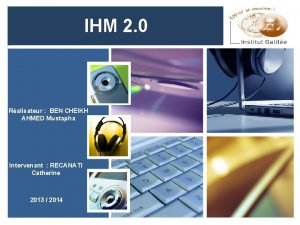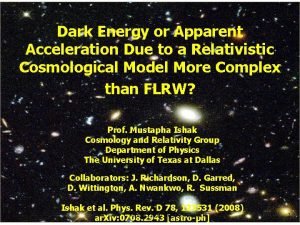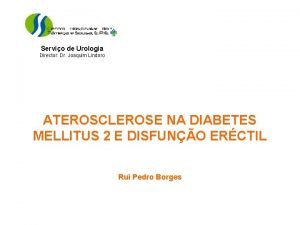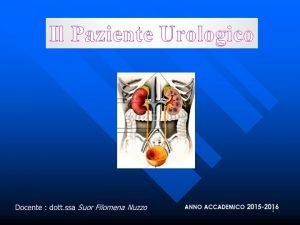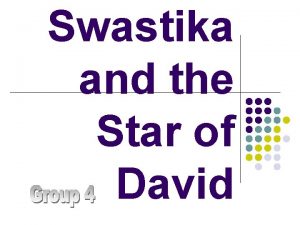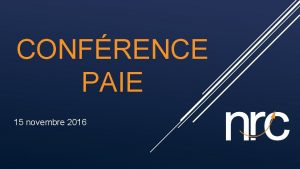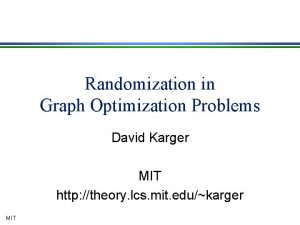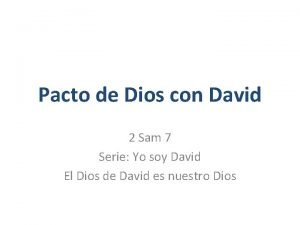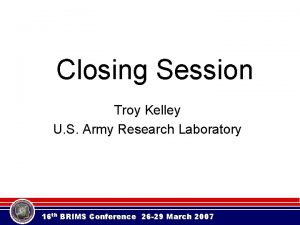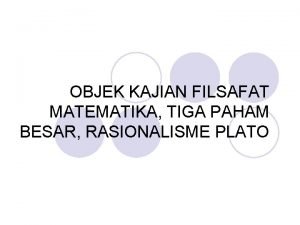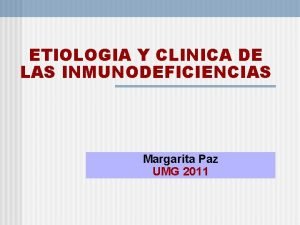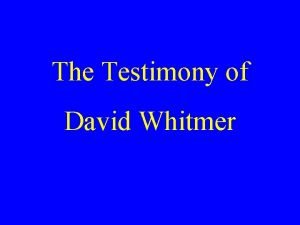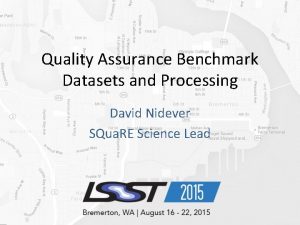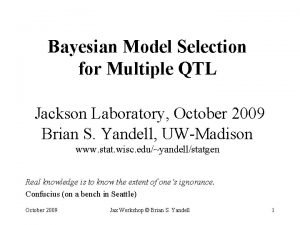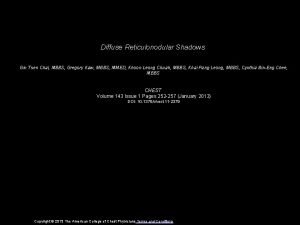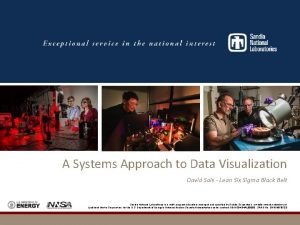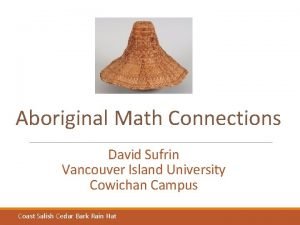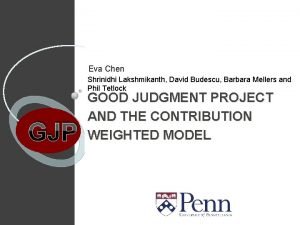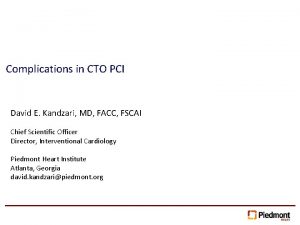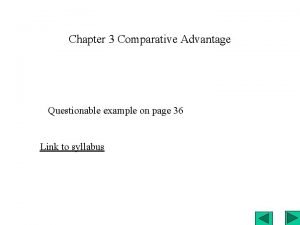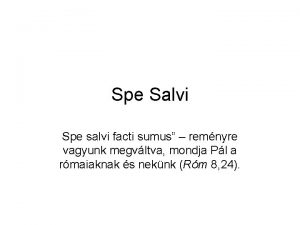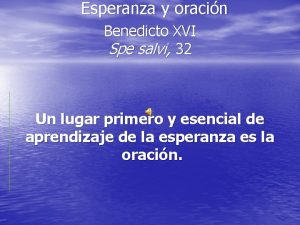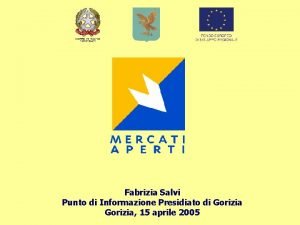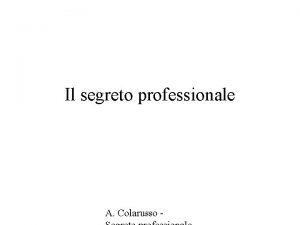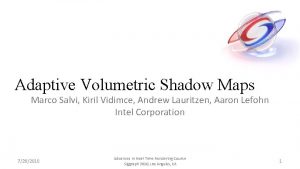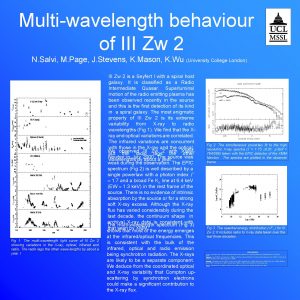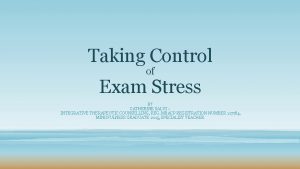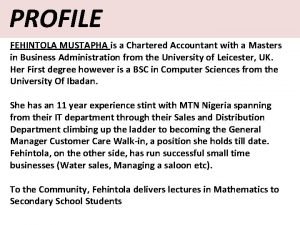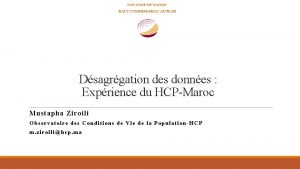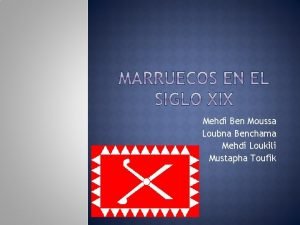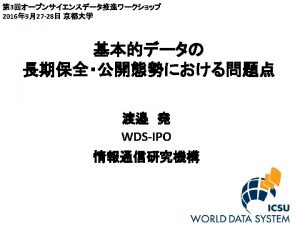David Fofi 1 Joaquim Salvi 2 El Mustapha



























- Slides: 27

David Fofi 1 Joaquim Salvi 2 El Mustapha Mouaddib 3 1 Le 2 i UMR CNRS 5158 Université de Bourgogne Le Creusot, France d. fofi@iutlecreusot. u-bourgogne. fr 2 VICOROB - IIi. A Universitat de Girona, España qsalvi@eia. udg. es 3 CREA EA 3299 Université de Picardie Jules Verne Amiens, France mouaddib@u-picardie. fr « Uncalibrated Vision based on Structured Light »

0. Outline ……………… 1. Introduction 2. Tools for uncalibrated vision 3. Uncalibrated reconstruction 4. Experimental results 5. Conclusion

I. Introduction ……………… 1. Structured light vision 2. Calibration vs uncalibration

« Structured light vision » …………. . . ……………… IMAGE PLANE PATTERN FRAME ………………. . J. Salvi, J. Batlle, E. Mouaddib, "A robust-coded pattern projection for dynamic measurement of moving scenes", Pattern Recognition Letters, 19, pp. 1055 -1065, 1998. J. Batlle, E. Mouaddib, J. Salvi, "Recent progress in coded structured light to solve the correspondence problem. A survey", Pattern Recognition, 31(7), pp. 963 -982, 1998.

« Calibration vs uncalibration » …………. . . ……………… DRAWBACKS OF HARD-CALIBRATION: • Off-line process (calibration pattern, etc. ) • Has to be repeated each time one of the parameters is modified Working with a camera with automatic focus and aperture is NOT possible. Visual adaptation to the environment is not allowed! A slide or LCD projector needs to be focused. RECONSTRUCTION FROM UNCALIBRATED SENSOR. . .

II. Tools for uncalibrated vision ……………… 1. Test of spatial colinearity 2. Test of coplanarity 3. Stability of the cross-ratio 4. Validity of the affine model

« Test of spatial colinearity » …………. . . ……………… P Q R S Cross-ratio within the pattern and cross-ratio within the image are equals if the points are colinear.

« Test of coplanarity » …………. . . ……………… o' p' s' o p s r' q' r q {o; p, q, r, s}={o'; p', q', r'} Cross-ratio within the pattern and cross-ratio within the image are equals if the point are colinear.

« Stability of the cross-ratio » …………. . . ……………… Error on cross-ratios with a noise from 0 to 0. 5 d (d is the distance between two successive points) Nota: to compare cross-ratios a projective distance is necessary. Method of the random cross-ratios. ………………. . K. Aström, L. Morin, "Random cross-ratios", Research Report n°rt 88 imag-14, LIFIA, 1992.

« Validity of the affine model » …………. . . ……………… n m affine projection m' n' Valid if 0

III. Uncalibrated reconstruction ……………… 1. Projective reconstruction 2. Structured light limitations 3. Euclidean constraints through structured lighting

« Projective reconstruction » …………. . . ……………… Recover the scene structure from n images and m points and. . . Intrinsic parameters Extrinsic parameters Scene geometry Points matching PROJECTIVE RECONSTRUCTION

« Structured light limitations » …………. . . ……………… MOVEMENT OF THE PROJECTOR CAMERA + PROJECTOR THE PATTERN SLIDES ALONG THE OBJECTS MOVEMENT OF THE 3 -D POINTS RECONSTRUCTION FROM TWO VIEWS (i. e. one view and one pattern projection) + HETEROGENEITY OF THE SENSOR INTRINSIC PARAMETERS CANNOT BE ASSUMED CONSTANT = PARAMETERS ESTIMATION APPROACH, CANONICAL REPRESENTATION ………………. . R. Mohr, B. Boufama, P. Brand, “Accurate projective reconstruction”, Proc. of the 2 nd ESPRIT-ARPA-NSF Workshop on Invariance, Azores, pp. 257 -276, 1993. Q. -T. Luong, T. Viéville, "Canonical representations for the geometries of multiple projective views", Proc. of the 3 rd Euro. Conf. on Computer Vision, Stockholm (Sweden), 1994

« The parameters estimation approach » …………. . . ……………… n images composed by m points. . . pij : image point Aj : projection matrix Pj : object point (Uij, Vij) : pixel co-ordinates

« The parameters estimation approach » …………. . . ……………… A unique solution cannot be performed because. . . W is a 4 x 4 invertible matrix… a collineation of the 3 -D space 4 x 4 - 1 (scale factor) = 15 degrees of freedom, thus. . . 5 co-ordinates object points assigned to AN ARBITRARY PROJECTIVE BASIS. A RECONSTRUCTION WITH RESPECT TO A PROJECTIVE FRAME (distances, angles, parallelism are not preserved)

« From projective to Euclidean » …………. . . ……………… Euclidean transformations form a sub-group of projective transformations. . . A collineation W upgrades projective reconstruction to Euclidean one. TRANSLATING EUCLIDEAN KNOWLEDGE OF THE SCENE INTO MATHEMATICAL CONSTRAINTS ON THE ENTRIES OF W. Matching projective points with their corresponding Euclidean points ? YES, BUT. . . Euclidean co-ordinates of points are barely available… … if they are: pattern cross-points have to be projected exactly onto these object points. ………………. . B. Boufama, R. Mohr, F. Veillon, "Euclidean constraints for uncalibrated reconstruction", Proc. of the 4 th Int. Conf. on Computer Vision, Berlin (Germany), pp. 466 -470, 1993.

« Parallelogram constraints » …………. . . ……………… The sensor behaviour is assumed to be affine. . . A C PROJECTED SQUARE B D ONTO A PLANAR SURFACE IMAGE CAPTURE

« Alignment constraints » …………. . . ……………… Vert. plane Pattern Horiz. plane • Points belonging to horizontal or vertical plane. . . • Arbitrary distance between two planes. . . • Cross-point as origin…

« Orthogonality constraints » …………. . . ……………… C' Light stripes Light planes A' B' Planar surfaces C A B Projected lines A'B' ·A'C' = (x. A' - x. B')(x. A' - x. C')+ (y. A' - y. B')(y. A' - y. C')+ (z. A' - z. B')(z. A' -z. C') = 0 otherwise… reduced orthogonality constraint: (x. A' - x. B')(x. A' - x. C')+ (y. A' - y. B')(y. A' - y. C') = 0

« Example » …………. . . ……………… An alignment constraint : x. A' points) We have: Then: = x. B' (relation between unknown Euclidean [x. A' ; y. A' ; z. A' ; t. A']T = W· [x. A ; y. A ; z. A ; t. A]T [x. B' ; y. B' ; z. B' ; t. B']T = W· [x. B ; y. B ; z. B ; t. B]T W 1 i·x. A = W 1 i·x. B (relation between known projective points) … same way for the other constraints… The set of equations is solved by a non-linear optimisation method as Levenberg-Marquardt. 15 independent constraints are necessary (W is a 4 4 matrix defined up to a scale factor)

IV. Experimental results ……………… 1. Colinearity 2. Coplanarity 3. Euclidean reconstruction

« Colinearity » …………. . . ……………… Theoretical (pattern) cross-ratio = 1. 3333 Measured (image) cross-ratio = 1. 3287 Projective error =6. 9 10 -4 Decision = the points are colinear Theoretical cross-ratio = 1. 3333 Measured cross-ratio = 1. 3782 Projective error =6. 2 10 -3 Decision = the points are not colinear

« Coplanarity » …………. . . ……………… Theoretical cross-ratio = 2 Measured cross-ratio = 1. 96 Projective error =2. 2 10 -3 Decision = the points are coplanar Theoretical cross-ratio = 2 Measured cross-ratio = 2. 186 Projective error =5. 9 10 -3 Decision = the points are not coplanar

« Euclidean reconstruction: synthetic data » …………. . . ……………… re-projection of 3 D points onto the image planes (circles: synthetic points, crosses: re-projections)

« Euclidean reconstructions » …………. . . ……………… -20 -40 y -60 -80 -100 -120 -140 -180 -160 -140 -120 x -100 -80 -60

V. Conclusion ………………

• Projective reconstruction from a single pattern projection and a single image capture. • Pattern projection used to retrieve geometrical knowledge of the scene: uncalibrated Euclidean reconstruction. • Structured lighting ensures there is known scene structure. • Structured light provides numerous contraints. • Tests of colinearity and coplanarity can be used to retrieve projective basis (5 points, no 4 of them being coplanar, no 3 of them being colinear).
 Mustapha beydoun
Mustapha beydoun Dr mustapha kara-ali
Dr mustapha kara-ali Mustapha abiodun akinkunmi
Mustapha abiodun akinkunmi Ahmed mustapha
Ahmed mustapha Mustapha ishak
Mustapha ishak Joaquim lindoro
Joaquim lindoro Venas emisarias
Venas emisarias Joaquim lindoro
Joaquim lindoro Karl-heinz ohlig
Karl-heinz ohlig Swastika and star of david
Swastika and star of david David james grandad
David james grandad David blanckaert
David blanckaert David karger mit
David karger mit Pacto de dios con david
Pacto de dios con david David gunning
David gunning David hilbert
David hilbert David vetter
David vetter Oliver cowdery testimony
Oliver cowdery testimony David nidever
David nidever David butruille
David butruille Dr david tsen
Dr david tsen David sais
David sais David mandelstam
David mandelstam David sufrin
David sufrin Eva
Eva Dr david kandzari
Dr david kandzari Dios estaba con el
Dios estaba con el David ricardo contribution to economics
David ricardo contribution to economics



